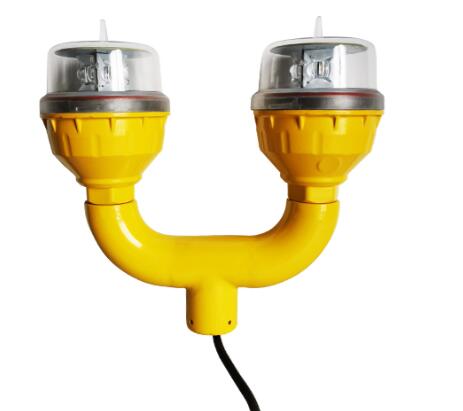Posted: 2025-07-19
The L-810 obstruction light is a critical component in aviation safety, designed to mark tall structures and prevent collisions with aircraft. These specialized lights are widely used on communication towers, wind turbines, skyscrapers, and other elevated structures to ensure visibility in all weather conditions. With advancements in LED technology, the L-810 obstruction light has become a reliable, energy-efficient solution for hazard marking.
Why the L-810 Obstruction Light Matters
Aviation authorities worldwide mandate the use of obstruction lighting on tall structures to enhance flight safety. The L-810 obstruction light meets stringent regulatory requirements, providing high-intensity illumination that can be seen from miles away. Unlike older incandescent or halogen lights, the L-810 model offers:
Superior Brightness – Ensures maximum visibility for pilots.

Energy Efficiency – Consumes less power while delivering optimal performance.
Longevity – Built to last with minimal maintenance needs.
| l-810 obstruction lights |
Durability – Resistant to harsh weather, vibrations, and extreme temperatures.
Key Features of the L-810 Obstruction Light
The L-810 obstruction light stands out due to its advanced engineering and compliance with aviation safety standards. Some of its notable features include:
1. High-Intensity LED Technology
Using powerful LEDs, the L-810 obstruction light delivers bright, consistent illumination, ensuring that structures remain visible even in fog, rain, or darkness.
2. Compliance with FAA and ICAO Standards
The L-810 meets the requirements set by the Federal Aviation Administration (FAA) and the International Civil Aviation Organization (ICAO), making it a globally recognized solution for obstruction lighting.
3. Versatile Mounting Options
Designed for easy installation, the L-810 obstruction light can be mounted on various structures, including:
Telecommunication towers
Wind turbines
High-rise buildings
Cranes and construction sites
4. Low Maintenance and Reliability
With a robust design and long lifespan, the L-810 obstruction light reduces the need for frequent replacements, making it a cost-effective choice for long-term use.
Applications of the L-810 Obstruction Light
The L-810 obstruction light is essential in multiple industries where tall structures pose a risk to aviation. Key applications include:
1. Aviation and Airports
Airport control towers, radar installations, and nearby tall buildings use L-810 obstruction lights to prevent collisions with aircraft during takeoff and landing.
2. Wind Energy Sector
Wind turbines, often located in open areas, require high-visibility lighting to alert low-flying aircraft. The L-810 obstruction light ensures compliance with safety regulations.
3. Telecommunications
Cell towers and broadcast antennas are typically tall and must be marked to avoid interference with air traffic. The L-810 provides reliable illumination for these structures.
4. Urban Infrastructure
Skyscrapers, bridges, and construction cranes in cities must adhere to aviation lighting regulations. The L-810 obstruction light helps maintain safety in densely populated areas.
Regulatory Compliance and Standards
To ensure uniformity in aviation safety, the L-810 obstruction light adheres to key regulations, including:
FAA AC 150/5345-43J – Specifies requirements for obstruction lighting in the U.S.
ICAO Annex 14 – Provides international guidelines for aerodrome safety.
EASA Standards – Ensures compliance across European airspace.
These standards dictate factors such as light intensity, flash patterns, and color to guarantee that the L-810 obstruction light performs effectively in all conditions.
Future Innovations in Obstruction Lighting
As technology evolves, the L-810 obstruction light is expected to integrate new advancements, such as:
Smart Monitoring Systems – Remote diagnostics to track performance and detect faults.
Solar-Powered Solutions – Reducing energy consumption and improving sustainability.
Adaptive Lighting Controls – Automatically adjusting brightness based on visibility conditions.
The L-810 obstruction light plays a pivotal role in safeguarding aviation and infrastructure by ensuring that tall structures remain visible to pilots. Its energy efficiency, durability, and compliance with international standards make it an indispensable tool for hazard marking. As industries continue to prioritize safety and efficiency, the L-810 obstruction light will remain a key component in protecting lives and property. Investing in high-quality obstruction lighting is not just a regulatory obligation—it’s a commitment to global safety.